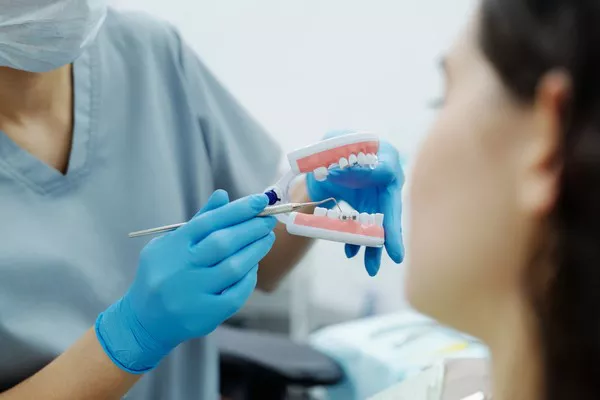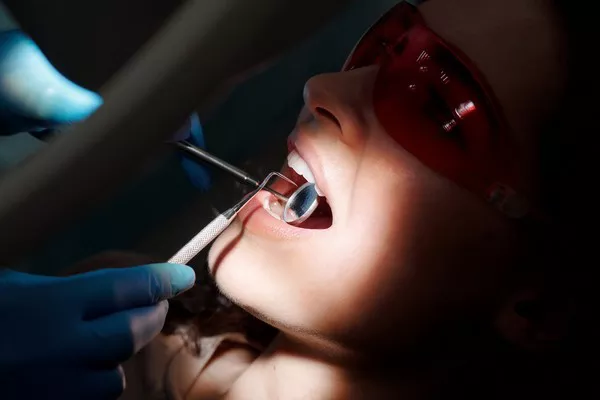Gingivitis is a common gum disease characterized by inflammation of the gum tissues surrounding the teeth. If left untreated, it can progress into a more severe form known as periodontitis, leading to tooth loss and other oral health complications. However, the good news is that gingivitis can be effectively treated and prevented with proper oral hygiene practices and professional intervention. This article explores the causes of gingivitis and provides an in-depth analysis of various treatment approaches.
Causes of Gingivitis
Gingivitis occurs due to the accumulation of dental plaque, a sticky film composed mainly of bacteria, on the teeth and along the gumline. Poor oral hygiene habits, such as inadequate brushing and flossing, allow plaque to build up, leading to the development of gingivitis. Other factors that contribute to gingivitis include:
a) Bacterial Infection: Certain strains of bacteria, such as Porphyromonas gingivalis and Treponema denticola, play a significant role in initiating and exacerbating gum inflammation.
b) Hormonal Changes: Hormonal fluctuations during puberty, pregnancy, and menopause can make gums more susceptible to gingivitis.
c) Medications: Some medications, like anticonvulsants and immunosuppressants, can cause gingival overgrowth, making oral hygiene maintenance difficult.
d) Smoking and Tobacco Use: Tobacco products impair blood flow to the gums, reducing their ability to heal and increasing the risk of gingivitis.
e) Health Conditions: Certain systemic diseases, including diabetes and HIV/AIDS, weaken the immune system, making individuals more prone to gum infections.
Diagnosis and Early Detection
Diagnosing gingivitis involves a comprehensive dental examination conducted by a qualified oral health professional. The dentist or periodontist examines the gums for signs of inflammation, bleeding, and plaque buildup. They may also use X-rays to assess bone loss around the teeth.
Early detection is crucial for effective management, as gingivitis is reversible at this stage. Regular dental check-ups enable timely identification and intervention, allowing for the implementation of appropriate treatment strategies.
Treatment Approaches
a)Professional Dental Cleaning:
The first step in treating gingivitis involves professional dental cleaning, also known as scaling and root planing. This procedure removes plaque and tartar from above and below the gumline, smoothes rough tooth surfaces, and promotes healing of the gums.
b) Improved Oral Hygiene Practices:
Patients are educated about proper brushing and flossing techniques to prevent plaque buildup. Daily brushing with a soft-bristled toothbrush and fluoride toothpaste, as well as regular flossing, is essential for maintaining good oral hygiene.
c) Antimicrobial Mouthwashes:
Dentists may recommend antimicrobial mouth rinses containing chlorhexidine or other prescribed agents to reduce bacteria and control plaque levels.
d) Antibiotics:
In severe cases, where the infection has spread, antibiotics may be prescribed to combat the bacterial overgrowth and inflammation.
e) Lifestyle Modifications:
Quitting smoking and adopting a healthy lifestyle can significantly improve gum health and aid in the treatment of gingivitis.
f) Periodontal Maintenance:
Regular maintenance visits to the dentist are essential to monitor the progress of treatment, remove any residual plaque or tartar, and ensure optimal oral health.
Preventive Measures
Preventing gingivitis requires consistent effort and adherence to proper oral hygiene practices. The following preventive measures can help maintain healthy gums:
a) Brushing Technique: Use a soft-bristled toothbrush and fluoride toothpaste. Brush gently in circular motions, covering all tooth surfaces and the gumline. Replace toothbrushes every three to four months or sooner if bristles become frayed.
b) Flossing: Clean between teeth daily using dental floss or interdental brushes to remove plaque from areas unreachable by a toothbrush.
c) Regular Dental Check-ups: Visit the dentist at least twice a year for professional cleanings and examinations.
d) Balanced Diet: A nutrient-rich diet consisting of fruits, vegetables, whole grains, lean proteins, and limited sugars helps maintain overall oral health.
e) Limit Alcohol and Tobacco Use: Minimize alcohol consumption and avoid tobacco products, as they increase the risk of gum disease.
Conclusion
Gingivitis is a common oral health issue that can be effectively treated and prevented with proper oral hygiene practices and regular dental visits. By understanding the causes and taking appropriate steps for treatment, individuals can safeguard their gums and prevent the progression of gingivitis into more severe forms of periodontal disease.
Related Topics:






























